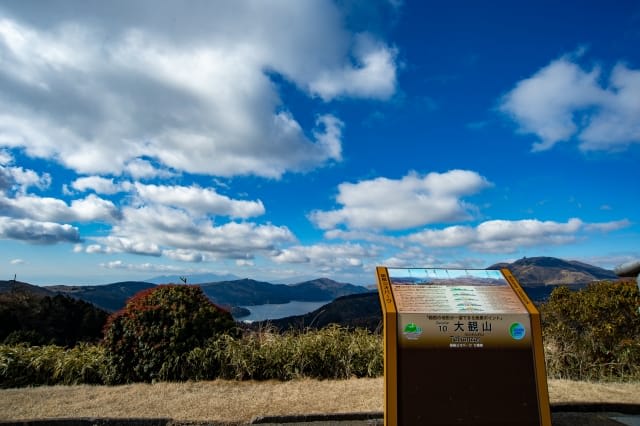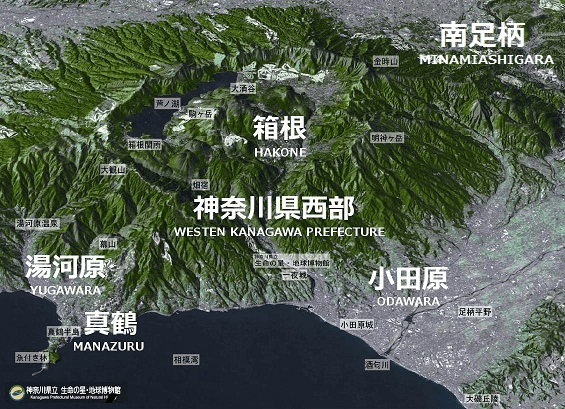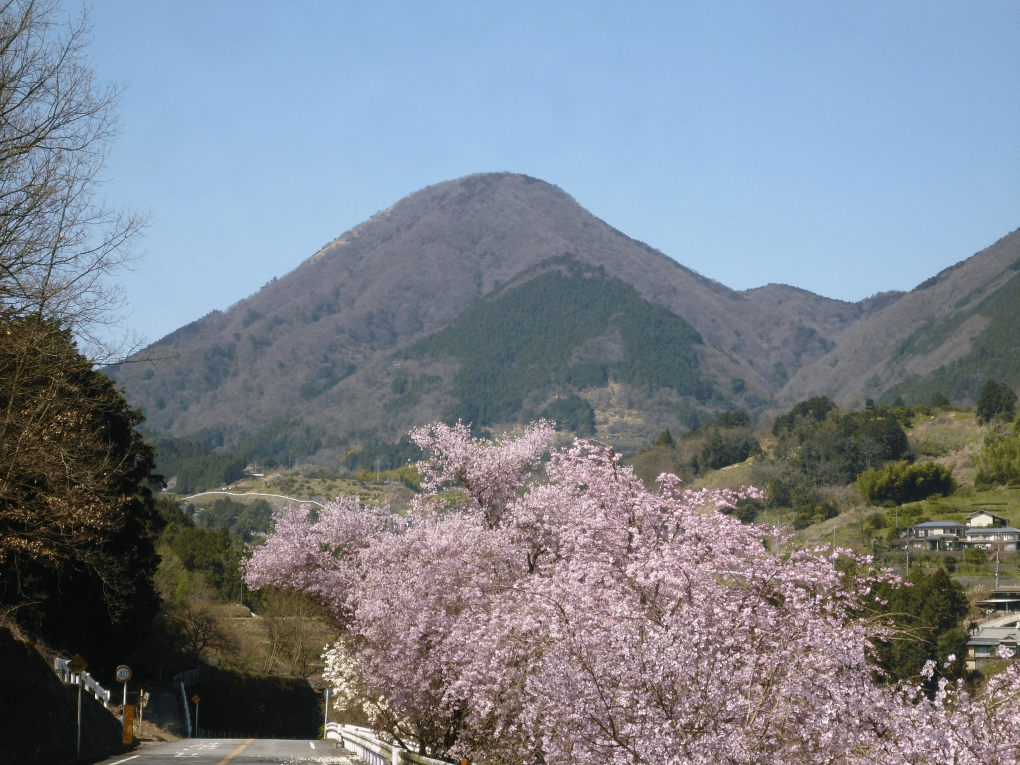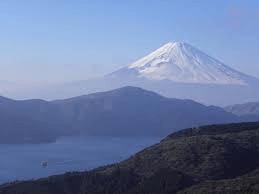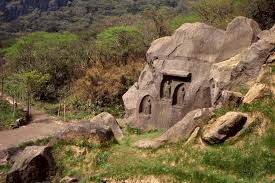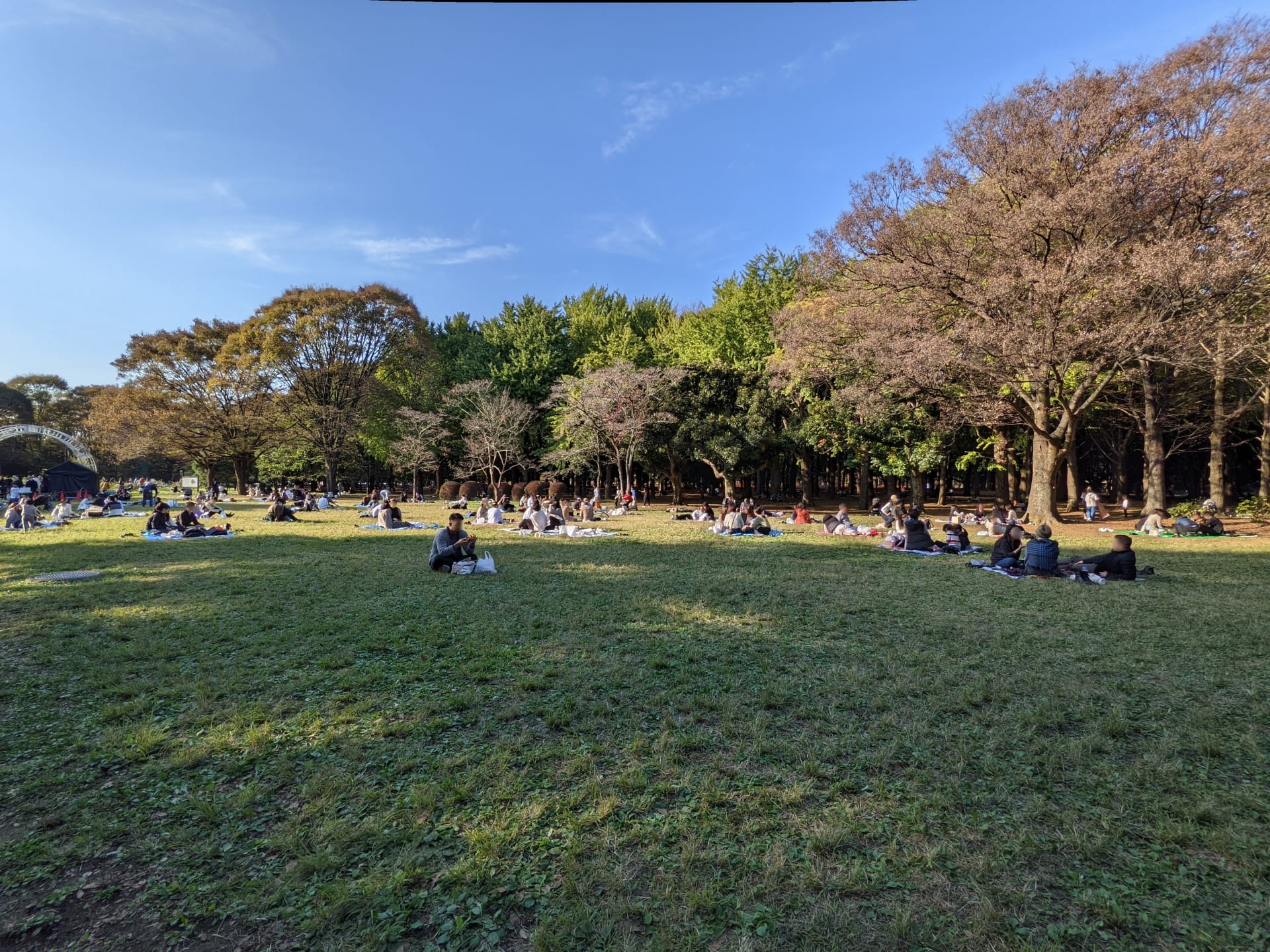Explore Hakone Geopark: A Journey Through Japan's Volcanic Landscapes and Cultural Heritage
Hakone is a hot spring region rich in natural features formed by volcanic activity over many years. Thanks to the Hakone volcano, numerous hot springs are scattered throughout Hakone. The area is divided into 17 distinct hot spring districts, including Yumoto hot spring and Gora hot spring, each offering thermal waters with different therapeutic properties.
Hakone is abundant with natural formations created by major geological movements, such as Owakudani and Lake Ashinoko. Why not visit these spots to experience Hakone's natural scenery and draw energy from its magnificent nature? Today, we'll introduce the Hakone Geopark, known as one of Japan's premier natural areas.
Throughout Japan, including Hakone, Magical Trip offers guided tours where you can explore local history, traditions, and food culture in depth with local guides.(Hakone Full Day Chartered Private Tour: Art & Nature)
Our most popular tour "Tokyo Bar Hopping Night Tour in Shinjuku" was ranked as Tripadvisor's #1 tour in 2024.

For tourists visiting Tokyo, why not try a private car tour that lets you efficiently visit multiple attractions in a single day? With expert guides who know all the best spots, you can fully experience the region's traditions and rich food culture even in just one day.
These tours include hotel pickup and drop-off service, allowing you to visit attractions stress-free and efficiently. If you're interested in nature-rich destinations like Hakone and want to explore Japan's history and traditions while avoiding crowds, these tours are perfect for you.
・Hakone Full Day Chartered Private Tour: Art & Nature
・Mt. Fuji Full-day Nature Guided Tour with a Private Chartered Car & Guide
What is Hakone Geopark?
Source:Official website
The area encompasses Hakone Town, Odawara City, Manazuru Town, Yugawara Town, and Minamiashigara City
A Geopark is a coined term combining "geo" (earth) and "park." Geoparks are designated areas where people can learn about Earth's formation and history through geological features and landforms, while considering what can be done for Earth's future from conservation and preservation perspectives.
As of October 2024, there are 47 Japan Geoparks certified by the Japan Geopark Committee. Hakone Geopark is one of them.
Hakone Geopark consists of five regions centered around the Hakone volcano:
- Hakone Town, formed by active volcanic activity
- Odawara City, developed as a castle town
- Manazuru Town, with its distinctive topography jutting into Sagami Bay
- Yugawara Town, a hot spring area on the border with Shizuoka Prefecture
- Minamiashigara Town, located above Hakone Town
How is Hakone Geopark different from other Geoparks? Explaining its characteristics and appeal
From here, we will explain the differences between Hakone Geopark and other Geoparks that exist, as well as the unique attractions of Hakone Geopark.
Located at the Unique Junction of "4 Tectonic Plates"
The Hakone Geopark is situated at the intersection of four tectonic plates:
North American Plate
Pacific Ocean Plate
Philippine Sea Plate
Eurasian Plate
Approximately 400,000 years ago, when the Pacific Plate subducted beneath the Philippine Sea Plate, magma emerged, leading to the development of the Hakone Volcano. Continuous volcanic activity made Hakone famous as a rare caldera volcano that formed between two plates.
The Hakone Geopark showcases magnificent natural landscapes centered around the Hakone Volcano and hot spring areas blessed by volcanic activity.
Experience Local Nature at Hakone Volcano
Source:Official website
The Hakone Geopark offers vast natural landscapes shaped by the volcano's distinctive topography. The mountainous areas, formed by colliding plates, display seasonal Hakone-specific vegetation and unique local wildlife.
You can observe steam vents and sulfuric landscapes in valleys created by the volcano's steam explosions, along with cliff walls formed by cooled lava.
Despite being only 90 km from Tokyo metropolitan area, Hakone Geopark offers extensive natural experiences. It's ideal for those seeking magnificent nature within easy reach from Tokyo.
Famous as One of Japan's Premier Hot Spring Destinations
Source:Official website
The Hakone Geopark gained popularity as one of Japan's top hot spring tourism destinations thanks to its volcanic activity.
Hakone Town features 17 hot spring areas of varying sizes. Ryokans (traditional inns) are located in spots offering unique local views, each with different water qualities. In Yugawara Town, high-temperature springs flow abundantly. Different spring qualities offer various therapeutic benefits, from treating dry skin to poor circulation.
The area has become popular with numerous accommodations and tourist spots around the hot springs, offering day-use baths and foot baths for casual enjoyment.
6 Tourist Spots to Experience the Power of Nature in Hakone Geopark
Here are 6 remarkable locations within the Hakone Geopark that showcase its natural grandeur.
Owakudani
Source:Owakudani Kurotamago Kan!
Owakudani was formed approximately 3,000 years ago when a massive steam explosion of the Hakone volcano caused a mountain collapse. The area features dramatic volcanic landscapes with rising steam and sulfur emissions typical of hot spring regions.
The observation deck on the second floor of Owakudani Kurotamago-kan offers a panoramic view of Owakudani. You'll be amazed by the vista of yellow rocky surfaces. I recommend taking the Hakone Ropeway from Sounzan Station to enjoy Owakudani's scenery from above.
Try the "black eggs" that are cooked for one hour in 80-degree hot spring water. Crack open the black shell to reveal a white boiled egg inside, offering a sulfuric aroma and rich egg flavor.
Location Details:
Address: 1251-1 Sengokuhara, Hakone, Ashigarashimo District, Kanagawa
Hours: 9:00-17:00
Open: Daily
Phone: 0460-84-5201
Official Website: https://www.kanagawa-park.or.jp/owakudani/
Instagram: https://www.instagram.com/owakudani_blackegg_hakone/
X: https://x.com/hakoneowakudani
Facebook: https://www.facebook.com/people/%E5%A4%A7%E6%B6%8C%E8%B0%B7%E3%81%8F%E3%82%8D%E3%81%9F%E3%81%BE%E3%81%94%E9%A4%A8oowakudani-kurotamagokan-black-egg/100057487688373/
Mount Komagatake
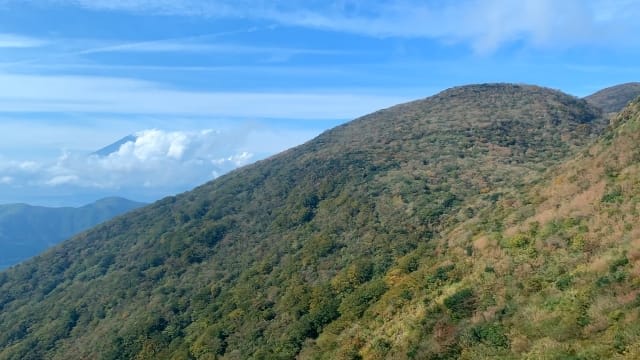
Mount Komagatake, standing approximately 1,356 meters tall in Hakone, is currently covered in vegetation. A closer look at its geology reveals multiple layers of lava, indicating its volcanic formation history.
The Hakone Komagatake Ropeway takes you to the summit, offering 360-degree panoramic views of seasonal flowers, autumn foliage, Lake Ashi, and Mount Fuji. Each direction presents a unique vista.
I recommend visiting Hakone Mototsumiya Shrine at the summit. Surrounded only by mountains and sky, its red torii gate and shrine buildings create a mystical atmosphere. Let the magnificent views filled with natural energy rejuvenate you.
Note: Hakone Komagatake Ropeway will be closed January 14-March 4 for renovations, reopening May 2025.
Location Details:
Address: 139 Motohakone, Hakone, Ashigarashimo District, Kanagawa
Hours: 9:00-16:50 (Last upward trip: 16:20)
Open: Daily
Phone: 0460-83-1151
Official Website: https://www.princehotels.co.jp/amuse/hakone-en/ropeway/
Instagram: https://www.instagram.com/hakone_komagatake_ropeway/
Facebook: https://www.facebook.com/HakoneKomagatakeRopeway/?locale=ja_J
Sengokuhara Area

The Sengokuhara area, situated at an elevation of 650m and surrounded by mountains, features various tourist spots showcasing natural landscapes, including the "Sengokuhara Silver Grass Fields" and "Hakone Botanical Garden of Wetlands," which are part of the Hakone Geopark's diverse geological attractions.
The Sengokuhara Silver Grass Fields is an essential tourist destination in the area. Silver grass spreads across the entire grounds surrounding a walking path, offering visitors a mystical view of grass swaying in the wind. The grass changes color with the seasons - green in summer and golden from autumn through spring.
The Hakone Botanical Garden of Wetlands, open from March to November, is a wetland area where visitors can leisurely stroll while admiring vibrant flowers growing in marshlands and streams. Both spots are perfect for photography, so enjoy capturing images from various angles.
<Spot Information>
Address: Sengokuhara, Hakone-machi, Ashigarashimo-gun, Kanagawa Prefecture
Hours: 24 hours
Closed: Never
Phone: 0460-85-7410
Official Website: https://www.hakonenavi.jp/spot/1215
Mt. Daikanzan
Source:Kankou Kanagarwa NOW
Mt. Daikanzan is one of the outer rim mountains located on the border between Hakone and Yugawara towns. From the observation deck at approximately 1,015m elevation, visitors can view Lake Ashi, Mt. Komagatake (the central volcanic crater), and the Sagami Bay area. On clear days, Mt. Fuji appears, presenting a spectacular sight. Enjoy the magnificent natural scenery of the Hakone Geopark while taking in the 360-degree panoramic views.
My recommendation is the large swing installed at the observation deck. While swinging, you'll feel as if you have the expansive view all to yourself.
Enjoy meals at the restaurant or tea lounge by the observation deck while taking in the views from Mt. Daikanzan, selected as one of the "Kanagawa 50 Scenic Spots."
<Spot Information>
Address: 955 Kajiya, Yugawara-machi, Ashigarashimo-gun, Kanagawa Prefecture
Hours: 5:30-22:30
Closed: Never
Phone: 0465-23-0381
Motohakone Stone Buddhas
Source:Hakone Zenzan
The "Motohakone Stone Buddhas" were gradually carved into lava rock over 700 years ago along the mountain path near Shojinga Pond close to Mt. Komagatake. These stone Buddha statues and pagodas were erected at the boundary between the lava flows of Mt. Kamifutago and Mt. Komagatake within the Hakone Geopark area, praying for the safety of travelers passing through.
As you proceed through the tunnel leading to the Motohakone Stone Buddhas, you'll encounter over 20 Buddha statues carved into the volcanic rock face. Their quiet presence amidst the overgrown nature creates a mystical atmosphere, highlighting the unique geological heritage of the Hakone Geopark.
The path where the Stone Buddhas are scattered isn't formally paved. The scenery, where nature and ancient volcanic formations merge, makes you feel as if you've traveled back in time. It's a mysterious spot that awakens your spirit of adventure within this dramatic geological landscape.
<Spot Information>
Address: Motohakone, Hakone-machi, Ashigarashimo-gun, Kanagawa Prefecture
Hours: 24 hours
Closed: Never
Phone: 0460-85-7601
Official Website: https://www.town.hakone.kanagawa.jp/www/contents/1100000001496/index.html
Odawara Castle

Odawara Castle, the iconic tourist destination in Odawara City, sits at the end of the outer rim of Mt. Hakone. The geological layers around Odawara Castle consist of pumice and volcanic ash deposited by Mt. Hakone's volcanic activity, showcasing another fascinating aspect of the Hakone Geopark.
While Odawara Castle may seem distant from Mt. Hakone, delving into its history reveals that it stands here thanks to the benefits of the Hakone volcano's geological influence.
The castle walls incorporate processed lava rock from the Hakone volcano. You'll feel a sense of romance seeing this volcanic rock that continues to be in the spotlight as part of the castle. Your visit will be even more enlightening when understanding its connection to the Hakone Geopark's volcanic heritage.
<Spot Information>
Address: Jonai, Odawara City, Kanagawa Prefecture
Hours: 9:00-17:00 (Last entry 16:30)
Closed: Second Wednesday of December (for maintenance), December 31-January 1
Phone: 0465-22-3818
Official Website: https://odawaracastle.com/
